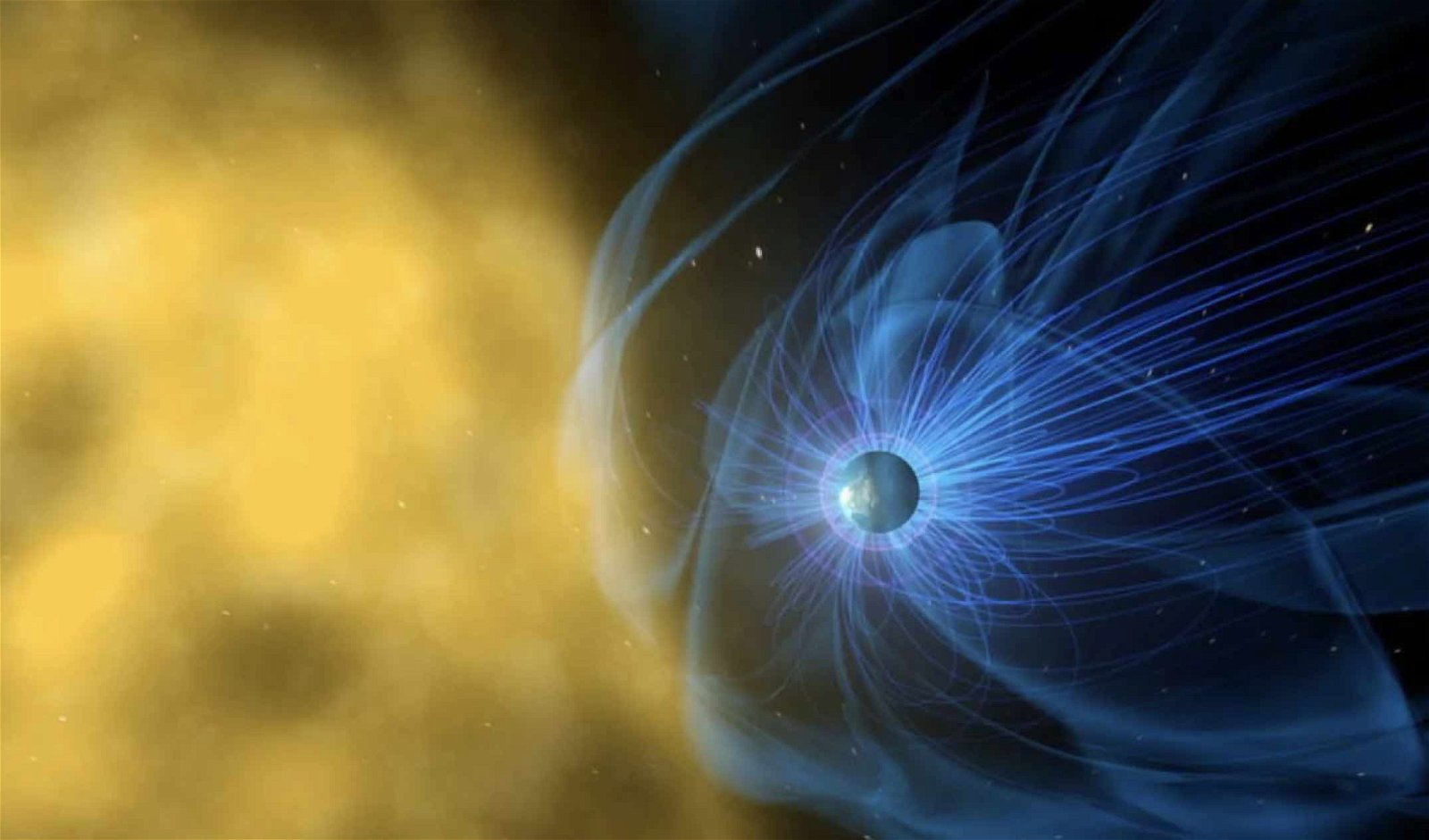New research is revealing further clues about an extreme event that occurred on Earth 41,000 years ago that allowed a large number of cosmic rays to reach the Earth as its magnetic field temporarily weakened.
The recent studies could offer scientists a deeper understanding of these occurrences and how they may potentially affect our planet if they happen again in the future.
Earth’s Cosmic Shield
Each day, radiation that proliferates throughout space bombards our planet’s magnetic field, which serves as a shield against these cosmic rays and highly charged particles ejected toward our planet from the Sun.
The Earth’s geomagnetic field undergoes periodic changes, including the wobbling of magnetic north and occasional reversals where north and south “flip” and exchange places. When this occurs, the strength of the planet’s geomagnetic field temporarily decreases.
The Laschamps Event
Between 42,200 and 41,500 years ago, something similar appears to have taken place. Rather than a permanent reversal of the magnetic field, a sudden and very intense change in the field’s intensity occurred, accompanied by a variation in pole orientation by about 45 degrees. Known as the Laschamps event, this represented what scientists call a geomagnetic excursion, and in addition to being the first known event of its kind, it also remains the most widely studied.
During geomagnetic excursions, the resulting low magnetic field intensity causes a reduction in the field’s regular shielding against cosmic radiation, which scientists believe could cause significant impacts here on Earth and may be related to past instances where major changes in Earth’s biosphere are recognized.
Bombardment by Cosmic Rays
Scientists can tell periods when greater amounts of cosmic rays were bombarding the planet by measuring radionuclides found in cores extracted from marine sediment and the ice that has accumulated over very long periods. Specifically, isotopes that result from interactions between our planet’s atmosphere and cosmogenic radiation can be used as indicators of periods when cosmic rays were able to reach the Earth.
According to researcher Sanja Panovska, magnetic field intensity was significantly impacted during the Laschamps event, as indicated by cosmogenic nuclides detectable in core samples.
Specifically, Panovska says that a particular radionuclide, beryllium-10, offers a good independent proxy for the changes that took place during the Laschamps excursion, with an average generation rate of the radioactive isotope appearing to have been twice as high around 41,000 years ago as it is today.
Teasing Out New Data
Although the Laschamps event is the most studied of its kind, Panovska was able to reveal new information obtained from both paleomagnetic data and data related to radionuclides of cosmic origin by producing reconstructions using each data set.
According to her reconstructions, Panovska says Earth’s magnetosphere receded as the geomagnetic field decreased, which she says greatly reduced the amount of shielding against cosmic rays for a time.
“Understanding these extreme events is important for their occurrence in the future, space climate predictions, and assessing the effects on the environment and on the Earth system,” Panovska said in a statement.
According to Panovska, the spike in beryllium-10 She found is a good indication that a large number of cosmic rays were able to make their way through our planet’s atmosphere during this extreme event. She will present her findings at the European Geosciences Union (EGU) General Assembly 2024.
Micah Hanks is the Editor-in-Chief and Co-Founder of The Debrief. He can be reached by email at micah@thedebrief.org. Follow his work at micahhanks.com and on X: @MicahHanks.

